Cold weather disrupts logistics
Last week’s hog slaughter down 8.1% from the week before and down 6.6% from a year ago.

The prolonged bitterly cold weather over much of the nation has disrupted the pork industry. Not only has it been a challenge to get hogs and workers to the slaughter plants, but also to get pork out of the plants and to retailers. The cold and snowy weather created a serious challenge for trucking and thus a problem for movement.
Last week’s federally inspected hog slaughter totaled only 2.438 million head, down 8.1% from the week before and down 6.6% from a year ago. This was the smallest weekly hog slaughter since the week ending on January 2. Saturday’s slaughter was only 173,000 head, the smallest Saturday since the day after Christmas and the second smallest Saturday since September 5.
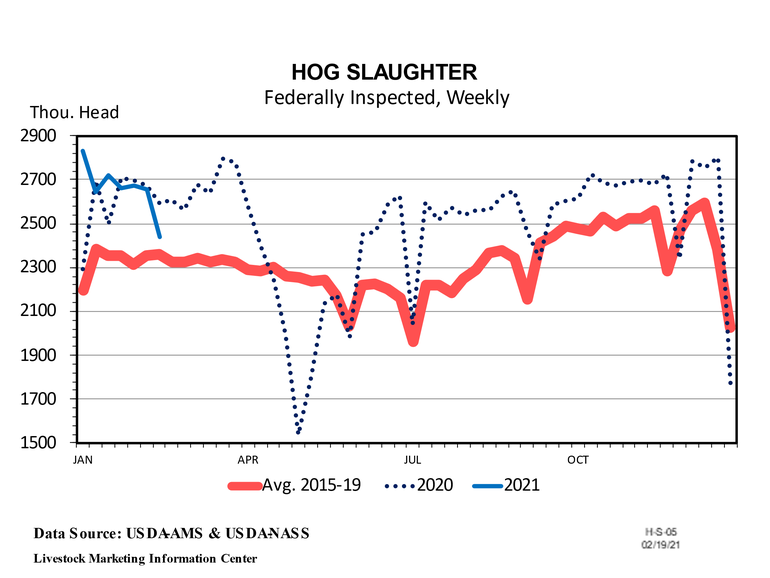
In the last 12 weeks, U.S. hog slaughter has been down 1.1% year over year. The December “Hogs and Pigs” report indicated it would be up 0.3%. In addition to weather, part of the difference may be explained by weights. The national average dressed weight for barrows and gilts has been above the year-earlier level for each of the last 22 weeks. This implies that some hogs have been backed up on farms.
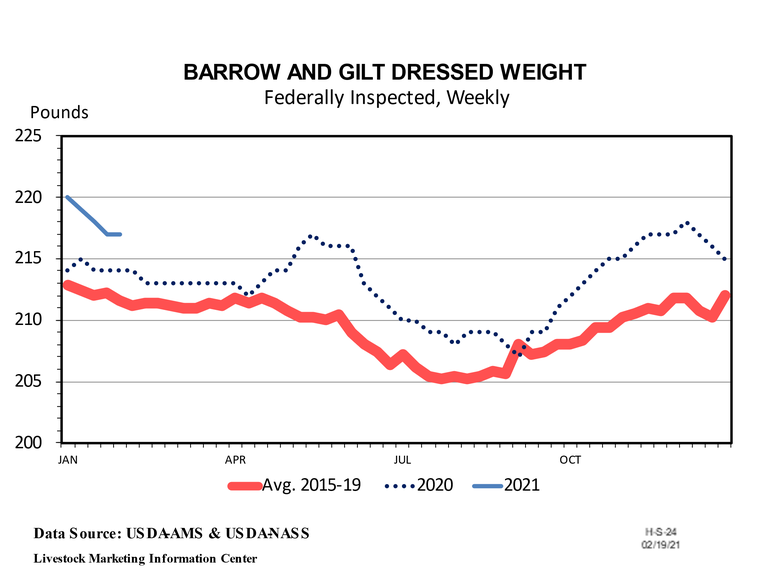
U.S. pork exports in 2020 totaled 7.28 billion pounds. That was up 15.2% from the year before and a record for the fifth consecutive year. China, Mexico and Japan accounted for two-thirds of U.S. pork exports. China’s purchases were more than double the year before.
U.S. pork imports in 2020 totaled 904 million pounds. That was down 4.3% from the year before and the smallest since 2013. USDA is forecasting 2021 pork exports will be down 1.5% and imports up 4.5%.
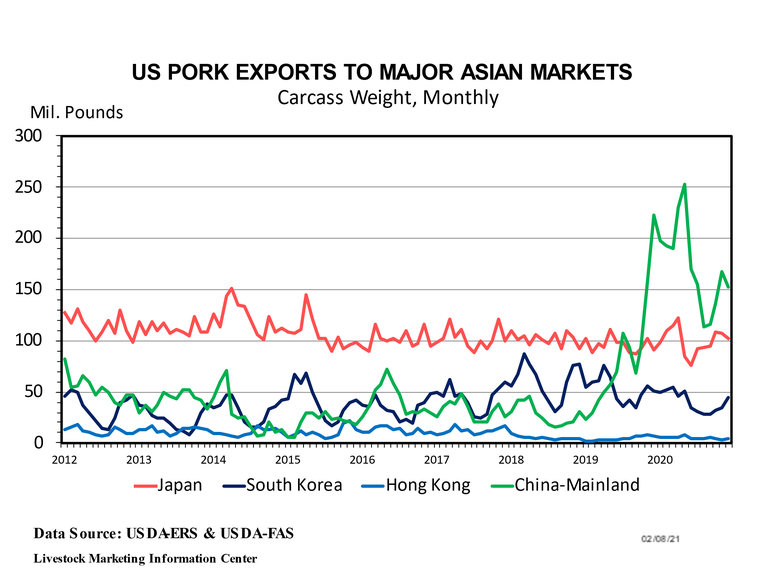
Last year, 25.73% of U.S. pork was exported and imports equaled 3.20% of production.
In 2020, hog imports totaled 5,296,376 head, up 3.9% from the year before and the most hogs imported since 2017. All came from Canada except for 120 head from Spain. Over three-fourths of imports were weaner/feeder pigs. Hog exports were 56,030 head, down 6.4% from 2019 and the fewest since 2016. Nearly 60% of hog exports were to Mexico or Brazil.
Meat consumption is holding fairly stable. U.S. per capita pork consumption was 52.4 pounds in 2019, 52.0 pounds in 2020 and is predicted to be 52.4 pounds in 2021. Red meat and poultry per capita consumption was 224.4 pounds in 2019, 225.1 pounds in 2020 and 224.8 pounds in 2021.
The average liveweight price for 51-52% lean hogs averaged $47.95/cwt. in 2019 and $43.18/cwt. in 2020. In January, 51-52% lean hogs averaged $47.44/cwt, up $1.44 from the prior month and up $4.01 from 12 months earlier. USDA is forecasting an average price of $50.50/cwt. in 2021.
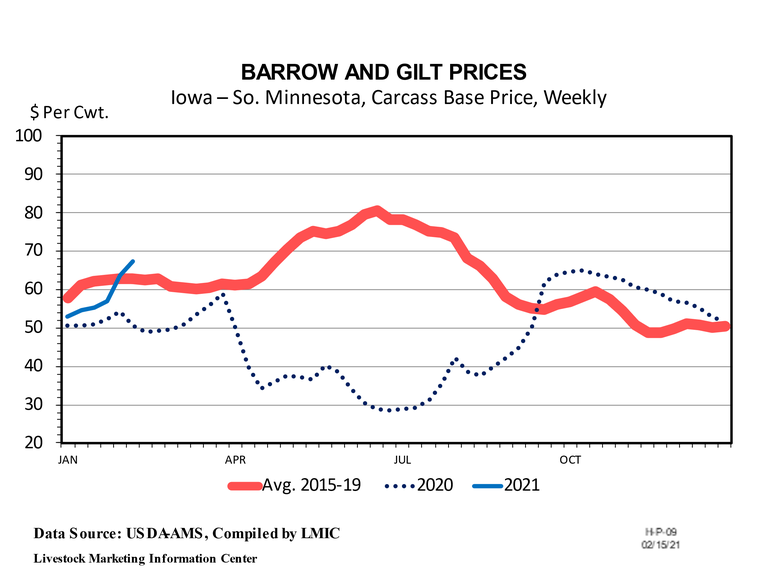
Retail pork price in January averaged $4.122 per pound, up 0.2 cents from December, up 28.5 cents from January 2020 and the seventh highest month on record. Strong retail pork prices and weak hog prices have been producing wide margins for middlemen. The January live-to-retail price spread for was 21.6 cents per pound higher than last January.
Cash corn prices have risen more than $2.00 per bushel since August. This has raised the cost of production to the highest level in six years. Soybean meal is more than $120 per ton higher than the same period last year.
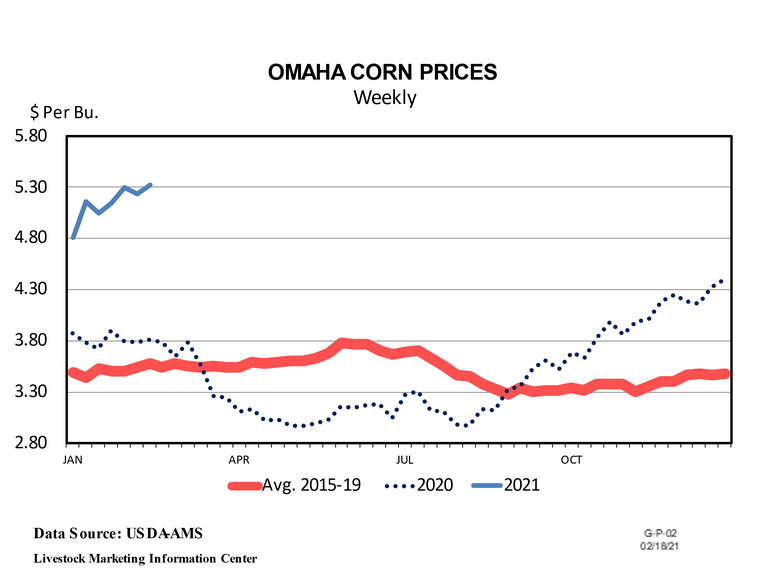
Corn futures indicate corn prices are expected to go through a slow price decline until fall, then decline rapidly with the fall corn harvest.
Calculations by Lee Schulz at Iowa State University put the loss for hogs marketed in January 2021 at $6.37 per hog marketed. This was the second consecutive month with red ink. Dr. Schulz estimated the cost of production at $52.84/cwt. live or $70.46/cwt of carcass weight. This was the highest production cost since September 2014.
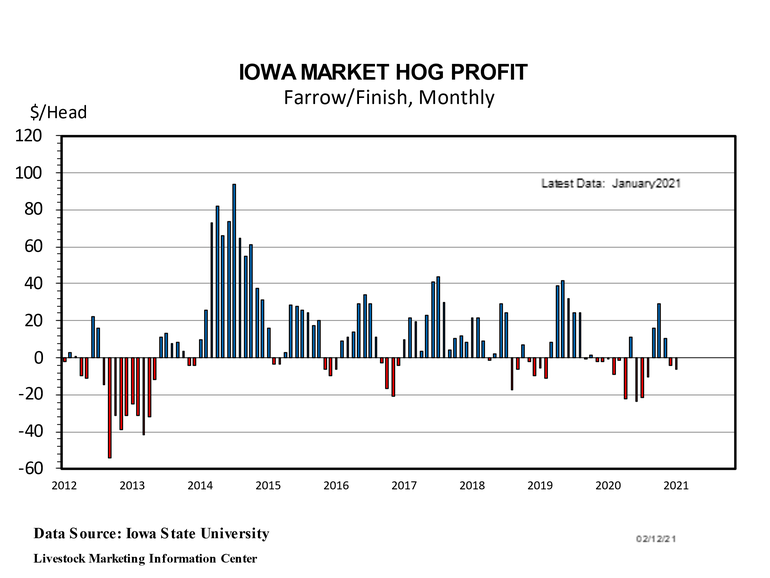
The general lack of profits is putting pressure on breeding decisions. Sow slaughter has been above year ago for 14 of last 16 weeks.
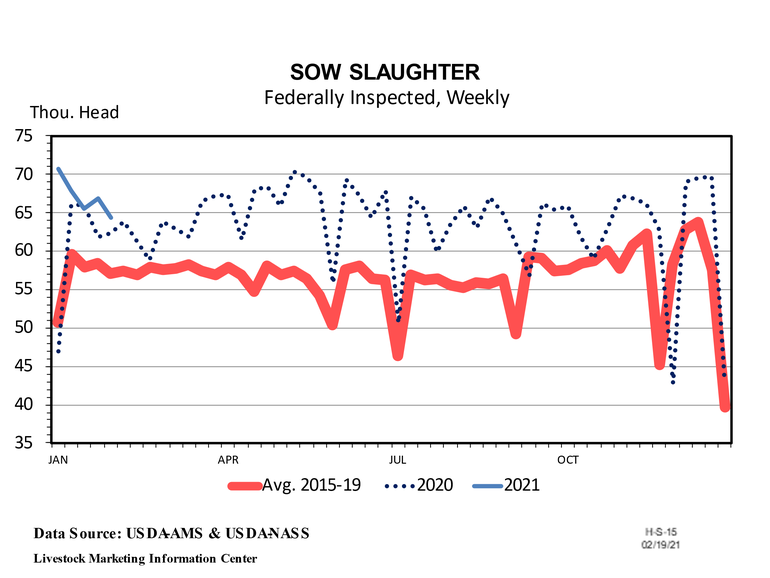
Lean hog futures are predicting higher prices each month through June or July, then lower prices each month through December. Prices in the summer of 2022 are expected to be $6.00/cwt. lower than this June-August.
Despite huge disruptions in the economy last year, domestic meat demand was higher in 2020, likely due to the cash payments made to most citizens. Domestic pork demand was up 1.3%, but thanks to Chinese purchases, export demand for pork was up a whopping 13.5%. Packer demand for live hogs was down 2.1%. The decline in hog demand was likely due to a drop in slaughter capacity last spring caused by COVID-19 among packing plant workers.
This afternoon, USDA/NASS will release poultry slaughter numbers for January. On Tuesday afternoon, the “Cold Storage” report for the last day of January comes out. On Thursday afternoon, livestock slaughter data for January will be released.
About the Author(s)
You May Also Like





